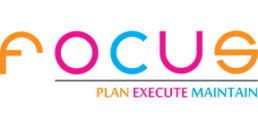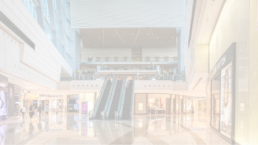Transforming Retail Spaces: Innovative Redesign Ideas for Retail Fitout in Darwin
Retail fitout plays a crucial role in the success of any retail business. The design and layout of a retail space can significantly impact customer experience, sales, and overall brand perception. In the vibrant city of Darwin, where the retail industry is thriving, it becomes even more essential for businesses to invest in innovative retail fitout ideas. This article explores the significance of retail space design, and key factors to consider during fitout, and presents a range of innovative ideas to transform retail spaces in Darwin.

The importance of retail space design
Creating an appealing and functional retail space is not just about aesthetics; it is about creating an environment that attracts and engages customers. The design of a retail space should align with the brand identity and target audience while providing a seamless shopping experience. A well-designed retail space can enhance customer satisfaction, increase dwell time, and ultimately drive sales. In Darwin, where competition among retailers is fierce, a thoughtfully designed retail fitout can make all the difference in capturing customers' attention and loyalty.
When designing a retail space, several factors must be taken into consideration. The layout should be intuitive, allowing customers to navigate easily and find what they need. Lighting plays a crucial role in setting the mood and highlighting products effectively. The choice of colors, textures, and materials should reflect the brand's personality and create a cohesive ambiance. Ergonomics and comfort should also be prioritized, ensuring that customers can browse and interact with products comfortably. By paying attention to these key aspects, retailers can create an inviting and memorable shopping environment.
Key factors to consider in retail fitout
Before diving into innovative fitout ideas, it is essential to understand the key factors that should be considered during the retail fitout process. Firstly, retailers must have a clear understanding of their target audience and their preferences. This knowledge will guide the design choices and ensure that the retail space resonates with the intended customers. Secondly, budgetary constraints should be taken into account. While it is tempting to go all out with extravagant fitout ideas, it is crucial to strike a balance between creativity and cost-effectiveness. Finally, the practicality and functionality of the retail space should never be compromised. The fitout should facilitate smooth operations, optimize space utilization, and provide flexibility for future adaptations or expansions.
Innovative retail fitout ideas for small spaces
In Darwin, where space can be a limiting factor, innovative fitout ideas for small retail spaces are highly sought after. One creative solution is to utilize vertical space by installing wall-mounted shelves or hanging racks. These not only save floor space but also create visual interest and maximize product display. Another idea is to incorporate flexible and modular fixtures that can be rearranged easily to accommodate changing merchandise or promotional displays. Additionally, using mirrors strategically can create an illusion of a larger space. Mirrors not only enhance the aesthetics but also make the store appear more spacious and inviting.
Retail fitout trends in Darwin
Darwin, being a dynamic and evolving city, witnesses various retail fitout trends that shape the shopping landscape. One prominent trend is the integration of technology into retail spaces. Retailers are leveraging interactive displays, digital signage, and augmented reality to create immersive experiences for their customers. This not only enhances engagement but also provides valuable product information and personalized recommendations. Another growing trend is the emphasis on sustainability and environment-friendly practices. Retail fitouts in Darwin are increasingly incorporating recycled materials, energy-efficient lighting, and eco-conscious design elements to reduce environmental impact and attract environmentally conscious consumers.
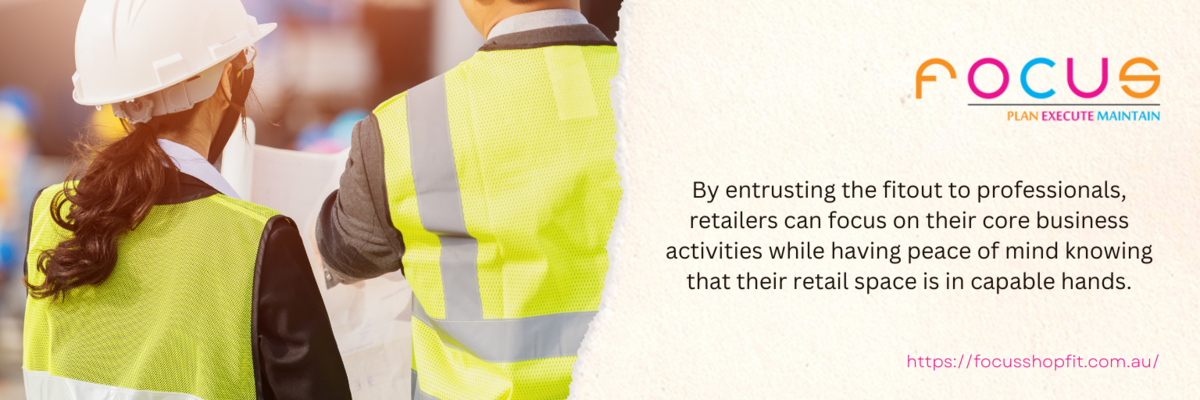
Incorporating technology in retail fitout
With the rapid advancements in technology, retailers in Darwin need to embrace innovative tech solutions in their fitouts. Interactive touchscreens can be placed strategically throughout the store, allowing customers to explore product details, check availability, and even make purchases. Augmented reality can be utilized to offer virtual try-on experiences, enabling customers to visualize products before making a purchase decision. Furthermore, smart shelving and inventory management systems can provide real-time updates on stock levels, ensuring that popular items are always available. By integrating technology into their fitouts, retailers can enhance the overall shopping experience and stay ahead of the competition.
Sustainable and eco-friendly retail fitout options
In recent years, there has been a growing awareness of the environmental impact of retail operations. Consumers are increasingly seeking out brands that prioritize sustainability and eco-friendly practices. In Darwin, retailers can leverage sustainable fitout options to attract environmentally conscious customers. Using recycled or upcycled materials for fixtures and furniture not only reduces waste but also adds a unique and rustic charm to the retail space. Energy-efficient lighting solutions, such as LED bulbs, can significantly reduce energy consumption while providing excellent illumination. Additionally, incorporating indoor plants not only adds a touch of greenery but also improves indoor air quality and creates a calming ambiance.
Hiring a professional retail fitout company in Darwin
While some retailers may attempt a DIY fitout, it is highly recommended to hire a professional retail fitout company in Darwin. These professionals have the expertise and experience to create innovative and functional retail spaces that align with the brand's vision and objectives. They can provide valuable insights, handle the entire fitout process, and ensure that all necessary permits and regulations are met. By entrusting the fitout to professionals, retailers can focus on their core business activities while having peace of mind knowing that their retail space is in capable hands.

Elevating your retail space with innovative fitout ideas
In Darwin's competitive retail landscape, it is essential for businesses to continuously innovate and adapt to stay ahead. By investing in innovative retail fitout ideas, retailers can transform their spaces into captivating destinations that attract and retain customers. Whether it is incorporating technology, embracing sustainability, or maximizing small spaces, the possibilities for retail fitout in Darwin are endless. By considering the key factors, exploring trends, and seeking professional assistance, retailers can elevate their retail spaces and create memorable experiences for their customers. So, leap and embark on a retail fitout journey that will set your business apart from the rest.
What is a Shopfit: The Complete Beginner's Guide
What is a Shopfit? Shopfitting is an essential aspect of creating a successful retail space. It involves the design, construction, and installation of fixtures and fittings within a store to optimize its functionality and appeal. A well-executed shopfit in an Australian retail store or anywhere else in the world, can significantly enhance the customer experience and contribute to the overall success of a business. In this comprehensive beginner's guide, we will explore the purpose of a shopfit, the benefits it offers, the process involved, and the various elements that make up a shopfit.
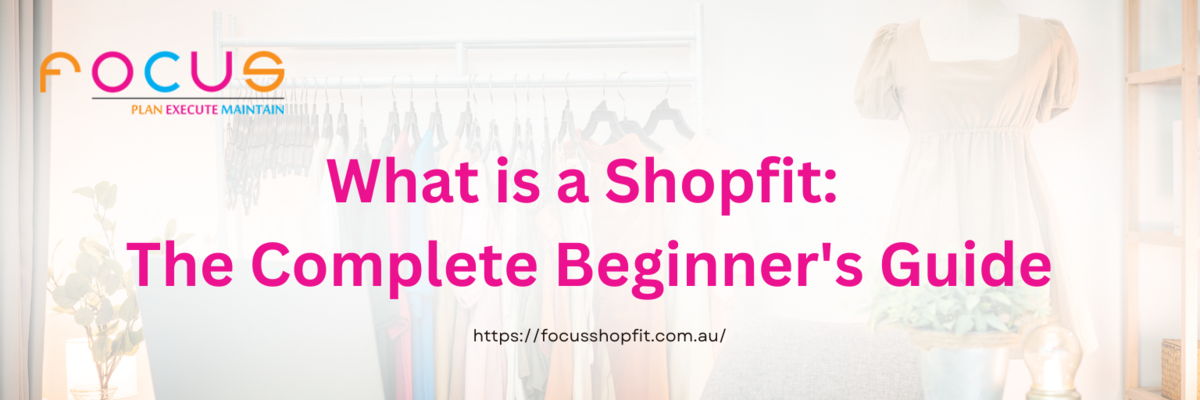
The Purpose of a Shopfit
The primary purpose of a shopfit is to create an environment that encourages customers to engage with the products or services offered by a business. It involves careful planning and execution to ensure that the layout, fixtures, and lighting work together harmoniously to attract customers and enhance their shopping experience. A well-designed shopfit can also help establish a brand identity, improve customer flow, and maximize the use of available space.
Benefits of a Well-Designed Shopfit
Investing in a well-designed shopfit can yield numerous benefits for a business. Firstly, it can significantly impact sales by creating an inviting and visually appealing environment that encourages customers to spend more time in the store and make purchases. A shopfit that showcases products effectively and provides a seamless shopping experience can increase customer satisfaction and loyalty. Additionally, a thoughtfully designed shopfit can enhance brand perception, positioning the business as professional, reliable, and trustworthy.

A well-executed shopfit can also improve operational efficiency. By optimizing the layout and placement of fixtures, it can facilitate smoother customer flow, reduce congestion, and minimize the time spent searching for items. This can lead to better productivity and employee satisfaction. Furthermore, a shopfit that incorporates energy-efficient lighting and sustainable materials can contribute to a business's commitment to environmental responsibility.
What is a Shopfit: The Process
The shopfitting process typically involves several stages, starting from the initial concept design and ending with the final installation. The first step is to understand the business's goals, target audience and desired aesthetic. This information is then used to develop a comprehensive design plan, including layout, fixtures, signage, and lighting.
Once the design is approved, the next phase involves sourcing materials, manufacturing fixtures, and coordinating with various contractors and suppliers. This stage requires careful project management to ensure that all elements are delivered on time and within budget. After all the components are ready, the installation process begins, which involves fitting the fixtures, connecting utilities, and adding finishing touches.
What is a Shopfit: Elements, Layout, Fixtures, and Lighting
Creating an effective shopfit involves careful consideration of three key elements: layout, fixtures, and lighting. The layout determines how the space is organized, including the placement of aisles, shelves, and checkout counters. It should be designed to optimize customer flow, ensure easy navigation, and highlight key areas or products. A well-planned layout can also create focal points and encourage customers to explore different sections of the store.
Fixtures play a crucial role in a shopfit, as they provide the infrastructure to display and merchandise products. They can include shelving units, display stands, racks, and cabinets, among others. Fixtures should be selected based on the type of products being sold and the desired aesthetic. They should be sturdy, functional, and easy to maintain, while also complementing the overall design theme.
Lighting is another vital element in shopfitting, as it sets the mood and illuminates the products. Different types of lighting, such as ambient, task, and accent lighting, can be used to create the desired atmosphere and highlight specific areas or products. Lighting should be carefully planned to ensure uniformity throughout the store, minimize shadows, and enhance visual clarity. It should also be energy-efficient and comply with relevant safety regulations.
Importance of Aesthetics in Shopfitting
Aesthetics play a crucial role in shopfitting, as they contribute to the overall ambiance and visual appeal of a store. The design and color scheme should align with the brand identity and target audience, creating a cohesive and memorable experience. A well-designed shopfit can evoke emotions, capture attention, and differentiate a business from its competitors.
The use of high-quality materials and finishes is essential in creating an aesthetically pleasing shopfit. From flooring and wall cladding to signage and decorative elements, every detail should be carefully chosen to enhance the overall design. Attention should be given to factors such as durability, ease of maintenance, and suitability for the intended purpose.
What is a Shopfit: Materials and Finishes
When it comes to shopfitting materials and finishes, there is a wide range of options available. The choice of materials should be based on factors such as durability, functionality, aesthetics, and budget. Common materials used in shopfitting include wood, metal, glass, laminates, and acrylics. Each material offers unique characteristics and can be tailored to suit specific design requirements.
Finishes, on the other hand, add the final touch to a shopfit, enhancing its visual appeal and durability. They can include options such as paint, varnish, veneer, powder coating, and vinyl wraps. The selection of finishes should align with the overall design concept and ensure longevity in a high-traffic retail environment.

Shopfitting Trends and Innovations
The field of shopfitting is continually evolving, with new trends and innovations emerging to meet the changing needs and expectations of customers. One of the prominent trends in recent years is the incorporation of technology into shopfitting. This can include interactive displays, touchscreens, virtual reality experiences, and smart lighting systems. Technology can enhance customer engagement, provide personalized experiences, and streamline operations.
Another trend is the focus on sustainable shopfitting. Businesses are becoming increasingly conscious of the environmental impact of their operations and are seeking eco-friendly solutions. This includes the use of recycled materials, energy-efficient lighting, and sustainable construction practices. Sustainable shopfitting not only reduces the carbon footprint but also resonates with environmentally conscious customers.
Hiring a Professional Shopfitting Company
While some businesses may attempt to undertake shopfitting in-house, it is generally recommended to hire a professional shopfitting company. A professional company brings expertise, experience, and industry knowledge to the table, ensuring that the shopfit is executed to the highest standards. They can provide end-to-end project management, from design and manufacturing to installation and post-completion services.
When selecting a shopfitting company, it is essential to consider its portfolio, reputation, and customer reviews. They should have experience in similar projects, an understanding of your business requirements, and a commitment to delivering on time and within budget. A professional shopfitting company can help bring your vision to life and create a retail space that reflects your brand identity.

The Impact of a Good Shopfit on Your Business
A well-executed shopfit can have a significant impact on a business's success. It creates an inviting and visually appealing space that attracts customers, enhances their shopping experience, and increases sales. A good shopfit also improves operational efficiency, strengthens brand perception, and demonstrates a commitment to environmental responsibility.
From the layout and fixtures to the lighting and aesthetics, every element of a shopfit requires careful consideration and planning. By understanding the purpose of a shopfit, the benefits it offers, the process involved, and the various elements that make up a shopfit, businesses can make informed decisions and create a retail space that stands out from the competition.
If you're looking to transform your retail space and optimize its potential, consider hiring a professional shopfitting company. They have the expertise and experience to bring your vision to life, creating a shopfit that aligns with your brand identity and resonates with your target audience. Invest in a good shopfit today and reap the rewards it brings to your business.
How Long Does a Retail Fitout Take?
A retail fitout refers to the process of designing and constructing a retail space to meet the specific needs and requirements of a business. It involves various tasks such as layout planning, interior design, electrical and plumbing installation, and the installation of fixtures and fittings. How long does a retail fitout take? The duration of a retail fitout project can vary depending on several factors. This article explores the different stages of a retail fitout, common challenges that may cause delays, and provides tips for ensuring a smooth and timely fitout process.

Factors That Affect the Duration of a Retail Fitout
Several factors can influence the duration of a retail fitout project. The size and complexity of the retail space play a significant role in determining the time required for completion. Larger spaces with intricate design elements may take longer to construct and fitout. Additionally, the availability of resources and materials can impact the timeline. Delays in the delivery of materials or unforeseen issues with the supply chain can cause project delays. Furthermore, the level of customization required in the fitout can also affect the duration. Highly customized designs may take longer to fabricate and install compared to standardized fixtures and fittings.
Typical Timeline for a Retail Fitout Project
While the duration of a retail fitout project can vary, there is a typical timeline that can serve as a guideline. On average, a small to medium-sized retail fitout project can take anywhere between six to twelve weeks. This timeline includes the planning, design, construction, and handover stages. However, it is important to note that larger or more complex projects may require a longer timeframe. It is crucial to consider these timelines when planning a retail fitout to ensure realistic expectations and avoid unnecessary delays.
Breaking Down the Different Stages of a Retail Fitout
A retail fitout project consists of several stages that contribute to the overall duration. The first stage is the planning and design phase, where the layout and concept of the space are determined. This stage involves collaboration between the business owner, architects, and interior designers to create a functional and aesthetically pleasing retail environment. Once the design is finalized, the construction stage begins. This stage includes tasks such as demolition, structural modifications, and building works. Following the construction stage, the fitout stage involves the installation of fixtures, fittings, and branding elements. Finally, the handover stage involves final inspections and the handover of the completed space to the business owner.
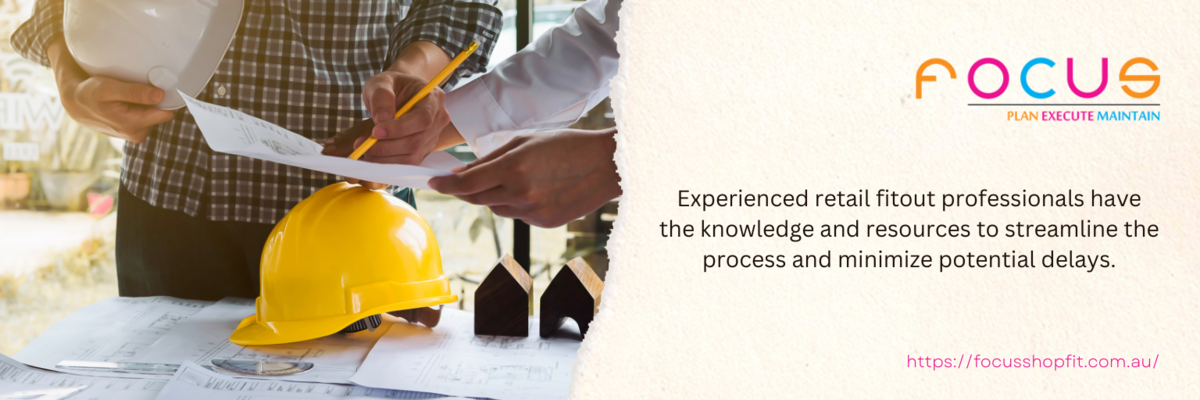
How Long Does a Retail Fitout Take: Preparing for a Shopfit
To ensure a smooth and efficient fitout process, proper preparation is essential. Before starting a retail fitout project, it is important to have a clear understanding of the desired outcome. This includes defining the brand identity, target audience, and the overall vision for the space. Conducting thorough research and gathering inspiration can help in communicating these requirements effectively to the fitout professionals. Additionally, it is crucial to establish a realistic budget and timeline. Clear communication with the fitout team and regular progress meetings can help in avoiding misunderstandings and delays.
Common Challenges That May Cause Delays in a Retail Fitout
Despite careful planning, there are common challenges that may cause delays in a retail fitout project. One major challenge is unexpected issues with the building structure or infrastructure. Hidden problems such as faulty wiring or plumbing can significantly impact the fitout timeline. Delays in the approval process, such as obtaining permits and licenses, can also cause setbacks. Unforeseen changes in design or scope can lead to additional work and delays. Additionally, poor coordination between different trades and suppliers can result in delays and miscommunication. It is important to anticipate these challenges and have contingency plans in place to minimize potential delays.
How Long Does a Retail Fitout Take: Tips for Ensuring a Smooth and Timely Process
To ensure a smooth and timely retail fitout process, there are several tips that businesses can follow. First and foremost, it is crucial to engage experienced fitout professionals who have a proven track record in delivering projects on time. Clear and open communication with the fitout team is vital to address any concerns or changes promptly. Regular site inspections and progress meetings can help in monitoring the project's progress and identifying any potential issues early on. Additionally, having a buffer in the timeline and budget for unforeseen circumstances can help mitigate any delays that may arise during the fitout process.
Hiring Professionals for a Faster and More Efficient Retail Fitout
To ensure a faster and more efficient retail fitout, it is highly recommended to hire professionals with expertise in the field. In Australia, experienced fitout professionals have the knowledge and resources to streamline the process and minimize potential delays. They can provide valuable insights into design and construction techniques, as well as offer solutions to overcome challenges that may arise during the fitout. Additionally, professionals can tap into their network of suppliers and contractors to ensure timely delivery of materials and efficient coordination between different trades. Investing in professional fitout services can ultimately save time, money, and stress during the retail fitout process.

Estimating the Duration of a Retail Fitout
Estimating the duration of a retail fitout requires careful consideration of several factors. The size and complexity of the retail space, the level of customization required, and the availability of resources and materials all play a role in determining the project's timeline. It is important to have realistic expectations and allow for potential delays by incorporating buffers in the timeline and budget. Engaging experienced fitout professionals and maintaining clear communication throughout the process can help in ensuring a smooth and timely fitout. By considering these factors and following the provided tips, businesses can complete their retail fitout projects within the desired timeframe, creating a functional and visually appealing retail space.
What is a Retail Fitout?
A retail fitout refers to the process of designing and constructing the interior space of a retail store. It involves creating a layout that maximizes the use of space, enhances the shopping experience, and appealingly showcases the products. A well-designed retail fitout can significantly impact a business, attracting customers, increasing sales, and creating a memorable brand image. In this article, we will explore what is a retail fitout, the importance of retail fitouts, the key elements involved, the different types of fitouts, the design process, important considerations, the benefits of hiring professionals, examples of successful fitouts, and the latest trends in the industry.

Importance of Retail Fitouts for Businesses
Retail fitouts play a crucial role in the success of any retail business. An attractive and functional interior design can greatly influence the customer's perception of the brand and their overall shopping experience. A well-designed retail fitout can create a positive first impression, making customers more likely to enter the store and explore the products on offer. It also helps in guiding customers through the space, optimizing the flow of foot traffic, and increasing the chances of making a sale.
Furthermore, retail fitouts provide an opportunity for businesses to showcase their brand identity and create a unique shopping environment. The design elements, such as lighting, colors, materials, and signage, can be carefully tailored to reflect the brand's personality and values. This helps in establishing a strong brand image and building customer loyalty. Additionally, a thoughtfully designed fitout can enhance the functionality of the space, ensuring that it is well-organized and efficient for both customers and staff.
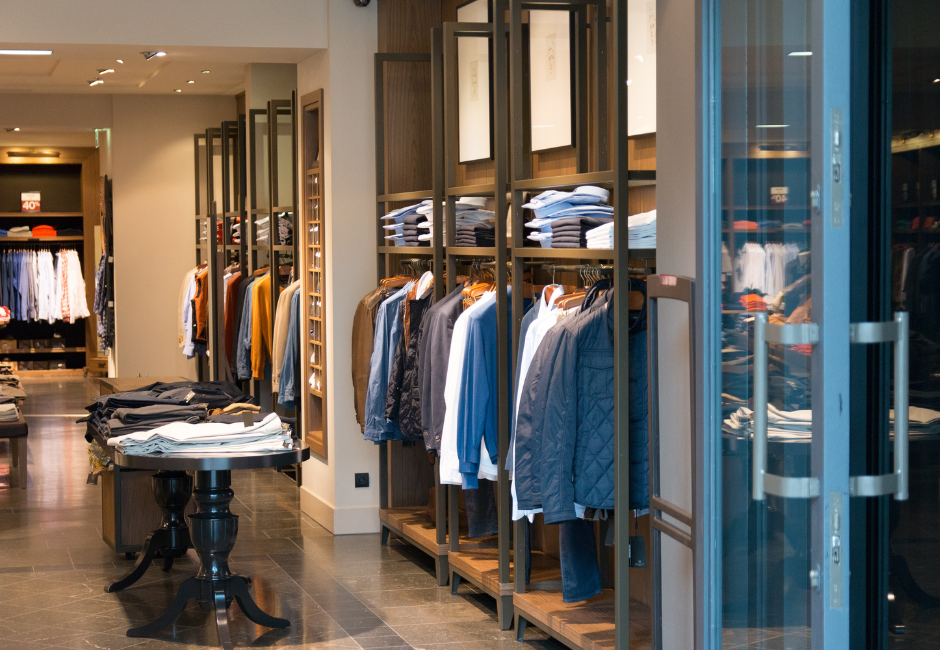
What is a Retail Fitout: The Elements
A retail fitout typically consists of several key elements that work together to create a cohesive and visually appealing space. These elements include:
- Layout and Space Planning
The layout of a retail store is a fundamental element of its fitout. It involves determining the placement of different areas, such as the entrance, checkout counter, product displays, and fitting rooms. The layout should be designed to optimize traffic flow, minimize congestion, and create a logical and intuitive shopping experience.
Space planning is another crucial aspect of a retail fitout. It involves determining the allocation of space for different functions and areas within the store. This includes considering factors such as the size of the store, the type of products being sold, and the target audience. Effective space planning ensures that the store has enough room for customers to move around comfortably and for products to be displayed attractively.
- Lighting
Lighting plays a vital role in setting the mood and atmosphere of a retail store. It can highlight products, create focal points, and evoke certain emotions. Different types of lighting, such as ambient, task, and accent lighting, can be used strategically to draw attention to specific areas or products. In addition, well-planned lighting can enhance the overall visual appeal of the store and make it more inviting for customers.
- Fixtures and Displays
Fixtures and displays are essential components of a retail fitout as they provide the means to showcase products effectively. These include shelves, racks, mannequins, and display cases. The choice of fixtures and displays should align with the brand's aesthetic and the type of products being sold. They should be arranged in a way that is visually appealing and allows for easy browsing and access.
Benefits of Hiring Adelaide Shopfitters for Store Renovations
When it comes to store renovations, partnering with a professional shopfitting company like Adelaide Shopfitters can make all the difference. With their expertise and experience, they can transform a store into a visually stunning and highly functional space.
Shopfitters in Adelaide understand the intricacies of retail design and can provide valuable insights into maximizing the potential of a shop. From concept development to project management, they guide store owners through every step of the renovation process.
Additionally, Adelaide Shopfitters have access to a network of skilled tradespeople and suppliers, ensuring that the renovation is completed to the highest standards. Their attention to detail and commitment to quality result in a finished product that exceeds expectations.
By hiring Adelaide Shopfitters, store owners can save time and effort. They can focus on running their business while leaving the renovation process in the hands of professionals.
Types of Retail Fitouts
There are various types of retail fitouts, each suited to different types of businesses and customer needs. Some common types include:
- Boutique Fitouts
Boutique fitouts are primarily used by small, specialized stores that offer niche products or services. These fitouts emphasize creating an intimate and personalized shopping experience. Boutique fitouts often feature unique and stylish design elements, premium materials, and carefully curated product displays.
- Department Store Fitouts
Department store fitouts are designed for larger retail establishments that offer a wide range of products across different categories. These fitouts usually involve multiple departments, each with its unique design and layout. Department store fitouts often have a more spacious and open feel, with clear signage and wayfinding to guide customers through the various sections.
- Pop-up Store Fitouts
Pop-up store fitouts are temporary setups that are designed to be set up and dismantled quickly. These fitouts are commonly used by retailers for short-term promotions, seasonal events, or to test new markets. Pop-up store fitouts are often highly creative and flexible, allowing businesses to create a unique and engaging shopping experience in a limited timeframe.

Process of Designing a Retail Fitout
The design process for a retail fitout typically follows a series of steps to ensure a successful outcome. These steps include:
- Briefing and Concept Development: The first step involves understanding the client's requirements, brand identity, and target audience. This is followed by developing a concept that aligns with the client's vision and objectives.
- Space Planning and Layout Design: The next step involves analyzing the available space and developing a layout that optimizes the use of space and ensures a smooth flow of traffic. This includes determining the placement of different areas, such as the entrance, product displays, and checkout counter.
- Material and Finish Selection: Once the layout is finalized, the next step is to select the appropriate materials and finishes for the fitout. This includes choosing flooring, wall treatments, lighting fixtures, and other design elements that align with the brand's aesthetic and budget.
- Fixture and Display Design: The design of fixtures and displays is a critical aspect of a retail fitout. This step involves designing custom fixtures or selecting pre-existing ones that complement the overall design concept. The fixtures and displays should be functional, visually appealing, and highlight the products effectively.
- Installation and Execution: The final step involves the actual construction and installation of the fitout. This includes coordinating with contractors, overseeing the construction process, and ensuring that the fitout is completed according to the design specifications and timeline.
What is a Retail Fitout: Key Considerations for Success
Designing and implementing a successful retail fitout requires careful consideration of various factors. Some key considerations include:
- Target Audience and Brand Identity
Understanding the target audience and the brand's identity is essential in creating a fitout that resonates with customers. The fitout should reflect the brand's values, its aesthetics, and appeal to the intended customer base. By considering the target audience's preferences, the fitout can be tailored to create a memorable shopping experience.
- Functionality and Efficiency
A well-designed fitout should prioritize functionality and efficiency. The layout should optimize the use of space, ensure easy navigation for customers, and facilitate smooth operations for staff. Practical considerations, such as storage space, checkout counter placement, and fitting rooms, should be carefully planned to enhance the overall functionality of the store.
- Flexibility and Adaptability
Retail trends and customer preferences are constantly evolving. To ensure long-term success, a retail fitout should be designed with flexibility and adaptability in mind. This includes considering future changes and the potential for reconfiguring the space to accommodate new products or services. Incorporating modular fixtures and displays can provide flexibility and allow for easy updates as needed.
Benefits of Hiring a Professional for Your Retail Fitout
While it may be tempting to undertake a retail fitout independently, hiring a professional in Australia is highly recommended. Here are some benefits of working with a professional fitout company:
- Expertise and Experience: Professionals have the knowledge and experience to design and execute successful fitouts. They understand the latest trends, best practices, and industry standards, ensuring that the fitout meets high-quality standards.
- Cost and Time Efficiency: Professionals can efficiently manage the fitout process, saving time and reducing costs. They have established relationships with suppliers and contractors, allowing for better pricing and timely completion of the project.
- Customized Solutions: Professionals can provide tailored solutions that align with the specific needs and objectives of the business. They can create unique designs that reflect the brand's identity and create a memorable shopping experience.
Examples of Successful Retail Fitouts
To gain inspiration and insight into successful retail fitouts, here are a few examples:
- Apple Stores: Apple stores are known for their sleek and minimalist design, which allows the products to take center stage. The use of glass, clean lines, and open spaces creates a modern and inviting atmosphere, reflecting the brand's commitment to innovation.
- Nike Flagship Stores: Nike's flagship stores are designed to create an immersive brand experience. They often feature interactive elements, digital displays, and dynamic lighting to showcase the brand's products and athletic culture.
- MUJI: MUJI stores are known for their simplicity and focus on functionality. The fitouts feature natural materials, neutral colors, and flexible displays that allow customers to interact with the products and experience the brand's philosophy of simplicity and sustainability.
Retail Fitout Trends to Watch Out For
The retail fitout industry is constantly evolving, and it is important to stay updated with the latest trends. Here are some trends to watch out for:
- Biophilic Design: Biophilic design involves incorporating elements of nature into the fitout, such as plants, natural materials, and natural light. This trend aims to create a connection with nature, promoting well-being and a sense of calm.
- Technology Integration: Technology plays an increasingly important role in retail fitouts. This includes interactive displays, augmented reality, and mobile payment solutions. Integrating technology can enhance the shopping experience and create a seamless and convenient environment for customers.
- Sustainability: With the growing emphasis on sustainability, many retail fitouts are incorporating eco-friendly materials, energy-efficient lighting, and recycling systems. This trend not only aligns with consumer values but also contributes to the overall sustainability goals of the business.

The Impact of a Well-Designed Retail Fitout
A well-designed retail fitout is a crucial factor in the success of a retail business. It can attract customers, increase sales, and create a memorable brand image. By considering the target audience, brand identity, and key design elements, businesses can create fitouts that enhance the shopping experience and reflect their unique personality. Hiring a professional fitout company can provide expertise, save time and costs, and ensure a successful outcome. By staying updated with the latest trends, businesses can continue to adapt and create fitouts that meet the evolving needs and preferences of customers.
